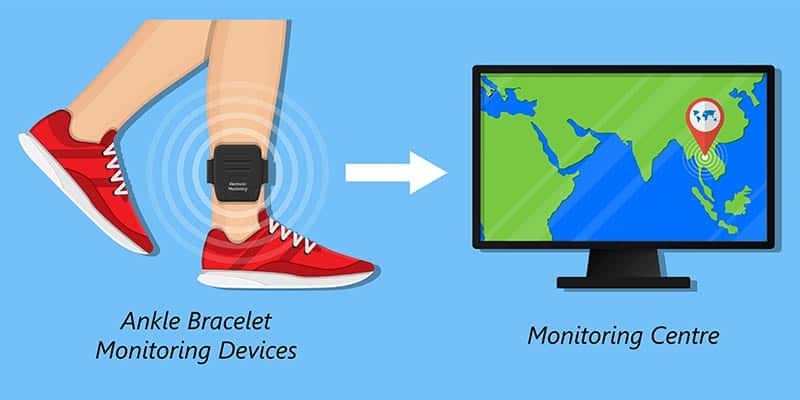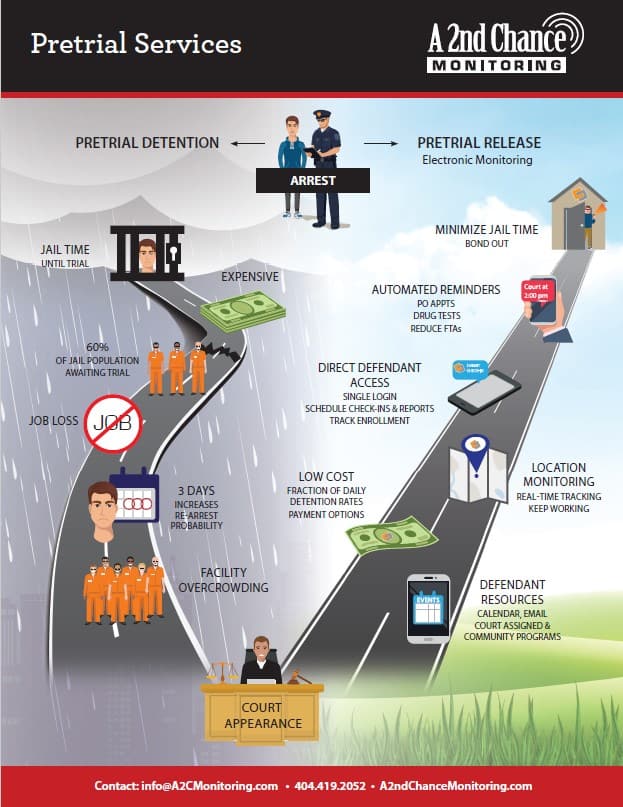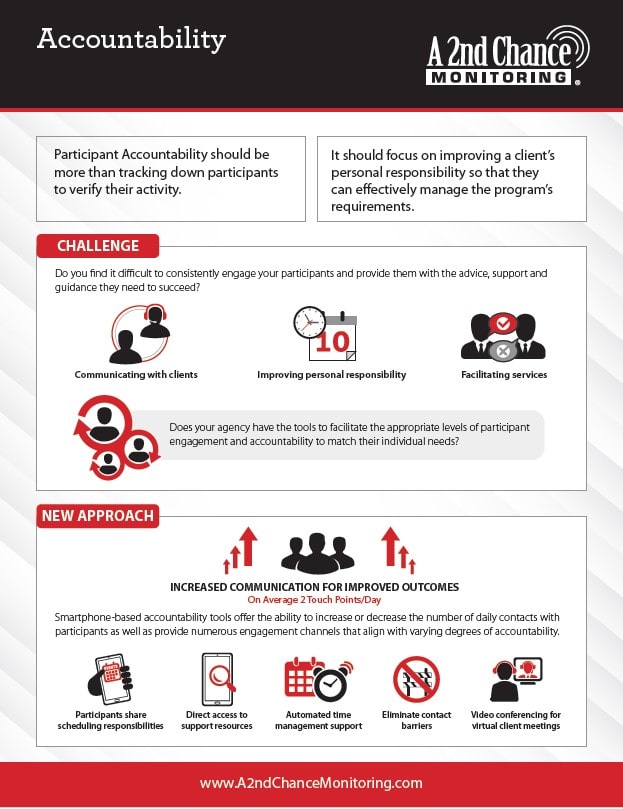As a nation, the U.S. spends close to $140 billion annually to keep detainees in pre-trial detention.
Pretrial detention used to mean languishing in jail waiting for the calendar to display the right date. In fact, the majority (60%) of those in jail are waiting for their trials to take place. More than just inconvenient and unpleasant, spending 72 hours behind bars causes many people to lose their jobs.
Today, those life-changing circumstances are less of a reality thanks to a range of advanced technology-based monitoring solutions that offer defendants ways to continue working and living outside of jail, even after an arrest.
A 2nd Chance Monitoring, a sister company to A 2nd Chance Bail Bonds, is now Georgia’s exclusive provider of Corrisoft AIR™ Product Suite, which includes the popular BLUtag® Active electronic tether that enables seamless GPS-driven monitoring and communications between detainees and those charged with overseeing them. Community supervision agencies use the devices to comply with court-ordered monitoring during pre-trial detention and also during post-trial probationary periods.
The AIR product suite includes the following leased devices and licensed software:
- BLUTag® Active: a lightweight, tamper-resistant ankle monitor recognized as the industry standard for detainee and defendant tracking
- AIR Mobile: a state-of-the-art smartphone supervising agencies provide to detainees and defendants for checking in and direct communication with their supervising officer
- AIR Connect: a small, lightweight, tamper-proof tether that pairs with the AIR Mobile device through a Bluetooth connection to ensure the phone is with the detainee at all times
- AIR Check-in App: a downloadable application that allows detainees to use their personal smartphones to report in
This range of monitoring devices allows judges in Georgia to match a device to the alleged defendant’s perceived risk and capabilities. For example, alleged offenders who pose a flight risk or an alleged defendant who has prior sex- or alcohol-related convictions are the two most common wearers of ankle monitors.
BLUTag tethers house the monitor and transmitter housed in the same device, which makes them easy to use and reliable. For those two reasons, most supervisory agencies in Georgia prefer BLUTag devices.
Detainees with tethers, which are also known as ankle monitors, wear them 24/7 while awaiting trial or sentencing. These “always on” monitors allow community agencies and law enforcement to know the detainee’s location at all times, and most models are tamper-resistant. Detainees pay a daily fee to wear the e-tethers until the court decides the device can be removed.
A 2nd Chance Monitoring remains dedicated to helping detainees and convicted defendants honor their court-ordered requirements with as little disruption to their lives as possible.




